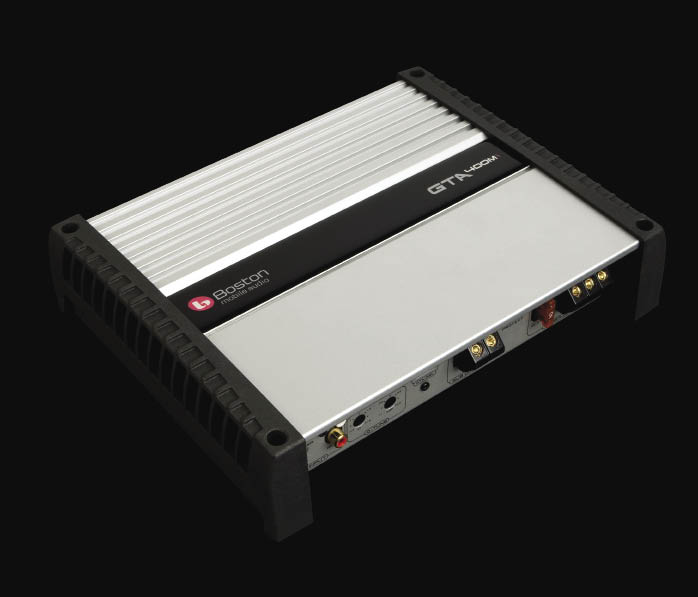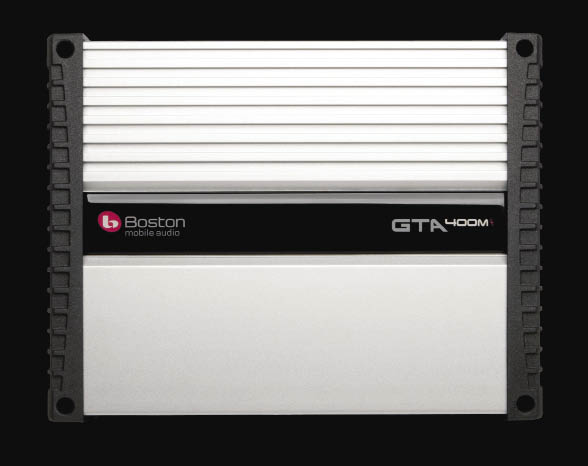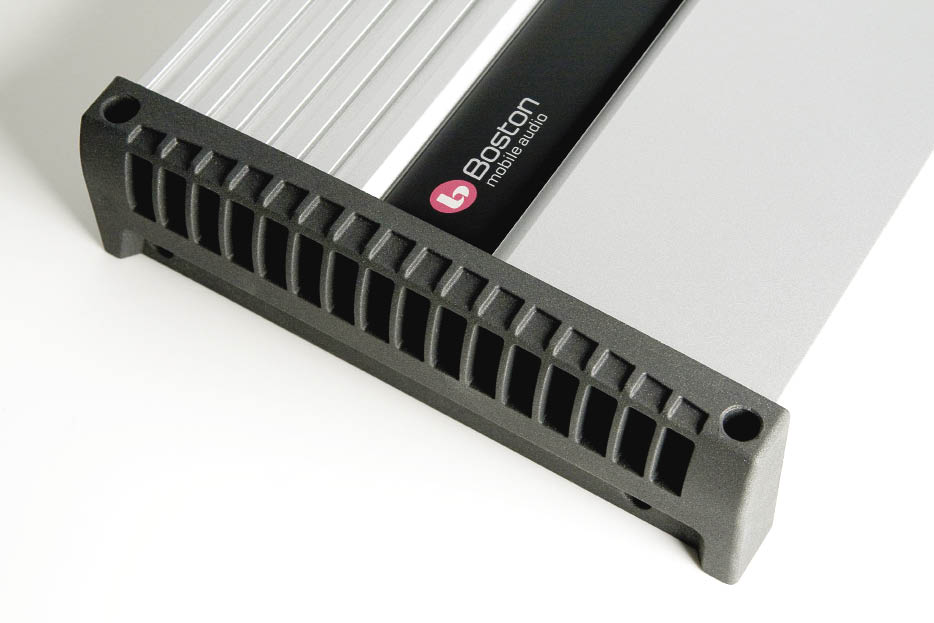When it comes to car audio amplifier choices these days, it seems like there is an almost endless supply of products. Prices and performance are all over the map, from bargain  basement junk, to high end high dollar gear that provides unique features and exceptional performance. If you’re like me and most other gearheads, the problem usually is wanting the features and performance of the high end esoteric gear, but I’m more realistically going to be able to afford the stuff closer to the opposite end of the price spectrum.
basement junk, to high end high dollar gear that provides unique features and exceptional performance. If you’re like me and most other gearheads, the problem usually is wanting the features and performance of the high end esoteric gear, but I’m more realistically going to be able to afford the stuff closer to the opposite end of the price spectrum.
Well, it would appear that the folks at Boston Acoustics recognized our problem and did something about it, by creating the GTA series of amplifiers.
Using several of the same technologies as their high-end GT series of amps, the GTA amplifiers provide excellent performance and sonics at a modest price. I recently received a GTA-400M for evaluation, and because I have always held the GT series in high regard, I was looking forward to taking a closer look at the less expensive model.
FEATURES AND CONSTRUCTION
The GTA-400M is a Class D mono amplifier, rated at 250 watts into 4 ohms, and 400 watts into 2 ohms. The amplifier is relatively small, measuring 10.25” x 8.375” x 2.375”. The compact chassis still allows all the controls and connections to be located along one side, and Boston’s IMS (Integrated Mounting System) uses mounting points to be located within the footprint of the chassis, without the need for external mounting tabs or feet. The heatsink is finished in silver brushed aluminum, with a gloss black strip that also provides model identification. The heatsink wraps around 2 sides of the amplifier, and the increase in both mass and area combine to provide efficient heat dissipation.
In terms of controls and connectors, the GTA-400M uses traditional set screw type gold plated terminals, and installers will appreciate that all the connections can be made using the same 3mm hex key.
the same 3mm hex key.
A 40A ATC fuse is mounted onboard, and there are control pots for gain, crossover frequency, subsonic filter, and a feature Boston calls Q-Tune, which provides bass boost with a variable Q factor.
An optional remote level control (GTA-RSL) allows control of the bass volume from the driver seat. The GTA-400M also includes high level inputs, which make it simpler to integrate with an OEM system. A dual color blue/red LED provides power-on and protection indications, so you always know the status of the amp at a glance.
Inside the Boston amp, a military spec PCB uses a combination of surface mount and through hole parts. The layout and design are well done, and particular attention has been paid to the filtering of the output stage, where all the Class D switching carriers are removed from the output. The amp is ruggedly built, with all the higher mass parts soldered and glued in place, and silicone damping material is used to prevent transformer and toroid  ringing. The amp uses a total of 6600µF of capacitance in the power supply, and a pair of 2200µF caps handle the energy storage for the outputs. Power supply and output devices are TO-220 case MOSFETs.
ringing. The amp uses a total of 6600µF of capacitance in the power supply, and a pair of 2200µF caps handle the energy storage for the outputs. Power supply and output devices are TO-220 case MOSFETs.
CONTROLS
As you’d expect from a Class D subwoofer amplifier, the internal crossover is always on, and is adjustable from 50Hz to 150Hz. The slope of the filter is -12dB/Oct. The subsonic filter, (a must for vented subwoofer applications) is also a -12dB affair, and can be adjusted between 10 and 50Hz. The Q-Tune feature is one of the technologies carried over from the high end GT series, and is very handy in getting your bass dialed in to perfectly blend with your front speakers. The control is adjustable from a Q of .7, all the way to a Q of 1.6. The higher you turn it, the more bass boost you get at whatever frequency you have the subsonic filter set to, but unlike a common bass EQ knob, the Q-Tune increases the slope of the curve as you increase the boost, to help protect speakers and maintain amplifier efficiency. The effect is more useful than a standard boost control, and can really help bring your bass forward in the car. To better illustrate this clever circuit, have a look at the graph I generated and you’ll quickly understand what it does. In the graph, the subsonic filter is set to 25Hz, and I made 4 curves with the control set to 0.7, 1.0. 1.3. and 1.6.
Read on for Results
Related Articles
 Lexus unveils all-electric LFA Concept
Lexus unveils all-electric LFA Concept
 Toyota unwraps GR GT supercar and GR GT3 racer
Toyota unwraps GR GT supercar and GR GT3 racer
 S30.world Launches "The Masterpieces" - Celebrating Nissan's S30 Platform
S30.world Launches "The Masterpieces" - Celebrating Nissan's S30 Platform
 Lexus LFA successor on the way?
Lexus LFA successor on the way?
 Mazda RX-7 successor on the horizon
Mazda RX-7 successor on the horizon
 MID WHEELS by RAYS - 2025 Product Catalog Release
MID WHEELS by RAYS - 2025 Product Catalog Release




